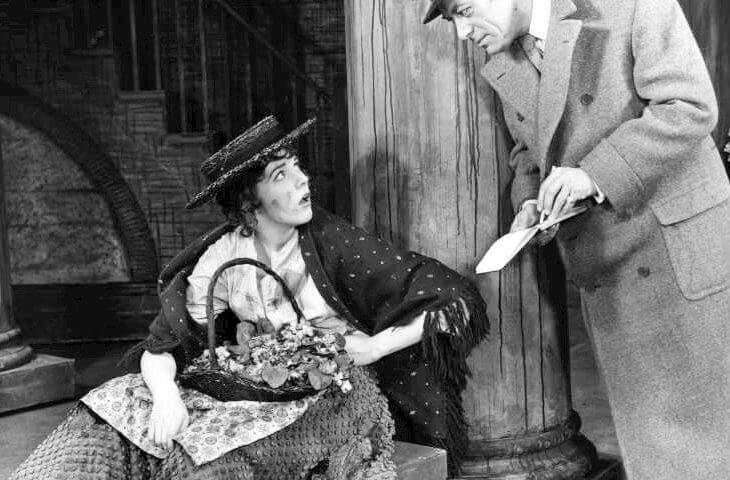I’m not sure if you’ve heard about Pygmalion and Galatea. It’s not what I consider a well-known Greek myth, though its other iterations are well known. As the story goes, Pygmalion was a renowned sculptor who disdained women until the day he created Galatea. Galatea was carved from ivory and appeared so delicate and fair that he immediately fell in love with his creation. Pygmalion prayed to the goddess Aphrodite that she would bring his sculpture to life and Aphrodite made Galatea real. If you’d like to read the myth on your own, it can be found in Classic Myths to Read Aloud (DB 65307) by William F. Russell.

Where are Pygmalion and Galatea today? One place is in Pygmalion: A Romance in Five Acts (DB 25025) by the famous playwright George Bernard Shaw. The play Pygmalion was made into a movie by the same name in 1938, which won the Oscar for Best Writing of a Screenplay. These iterations of Pygmalion feature a self-professed bachelor named Henry Higgins who is a scholar of linguistics. As a bet he takes on the task of teaching a Cockney English girl, Eliza Doolittle, how to speak proper English. The bet is that she will become so well-spoken that she will pass as royalty at an upcoming ball. Of course, as Eliza’s tutelage progresses the two begrudgingly fall in love.
Sound familiar? You might have heard of these characters because of the popular musical My Fair Lady. The movie version, starring Rex Harrison and Audrey Hepburn, won several awards including the Oscar for Best Music. Some of its songs include “I Could’ve Danced All Night” and “I’ve Grown Accustomed to Her Face”. Unfortunately, there don’t seem to be audio described versions of the movies, but the movies are supposed to be true to the play. I encourage you to give it a listen, and think of how it all started with a story about a sculptor and his creation.
